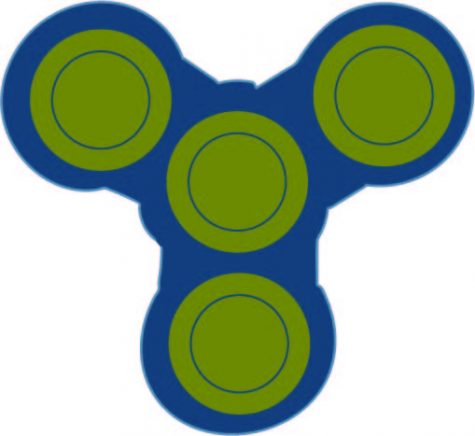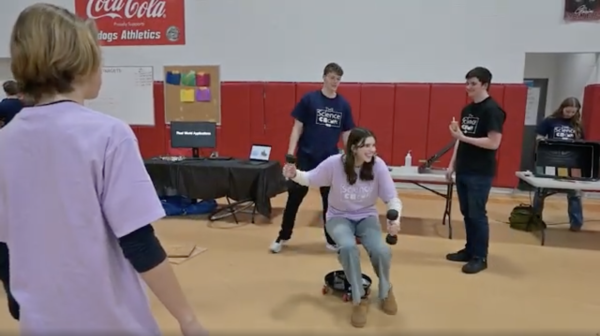TREND TWISTER
Garrett Connolly and Kate Bokowy start a fidget spinner business
 If you don’t absentmindedly tap your foot, click your pen, or wiggle your legs during class, you probably know or have observed another student that does practice a nervous twitch.
If you don’t absentmindedly tap your foot, click your pen, or wiggle your legs during class, you probably know or have observed another student that does practice a nervous twitch.
After recognizing the rise in popularity of expensive, stress reducing devices, Juniors Garrett Connolly and Eighth Grader Kate Bokowy developed their business “Fidget Spinners” in order to provide a less disruptive outlet for the nervous energy in both children and adults.
Originally, fidget spinners were developed as a stress relieving toy for people with Attention Deficit Hyperactivity Disorder (ADHD), but have increased in prominence to a small, calming gadget similar to a stress ball for anyone with excessive tension.
“The resistance from the gyroscopic force can be satisfying to the user and the size and weight are optimal and user friendly. This can be soothing and can relieve stress,” said Connelly, chief sales officer and chief marketing officer of Fidget Spinners.
Despite their miniscule size, the process of creating a fidget spinner, from order to delivery, is actually quite extensive, with one spinner requiring up to two hours to print.
Throughout the day, as orders are placed, Connelly submits the order details into a shared spreadsheet, and each night, chief operations officer and chief product officer
Kate Bokowy checks the spreadsheet for new orders.
“I make fidget spinners by coding on a program called openSCAD to make an object. Then I use my 3D printer to print them. The 3D printer melts filament/plastic and then ‘draws’ the object layer by layer to finally build up an object,” said Bokowy.
With three varieties of spinners, one nut on five legs, two nuts on six legs, or one bearing on three legs, and twelve different color options for both the shell and caps, there are nearly endless possibilities for customization.
Depending on the model, these fidget spinners can be purchased for ten, twelve, or fifteen dollars, a more cost-effective choice in comparison to the thirty dollar fee of many online retailers.
Unlike some toy crazes in previous years, such as the kendama, fidget spinners serve a specific and beneficial purpose and are not a significant distraction to students.
“I have spoken to many teachers and a lot of them approve of the spinners’ quality to calm students’ minds and none have expressed a concern to me,” said Connelly.
In regards to plans for the future of the business, the founders are hoping to expand their outreach to a broader audience and venture into new designs.
“We would like to add logos and other pictures on the face of the cap where your finger goes. Also, in the future we might start selling on Etsy or create our own website,” said Bokowy.
If you would like to purchase a fidget spinner, contact Garrett Connelly ([email protected]) or Kate Bokowy ([email protected]) through email or in person.

Cienna Roget is a senior and it is her second year on staff. She is the managing editor.









